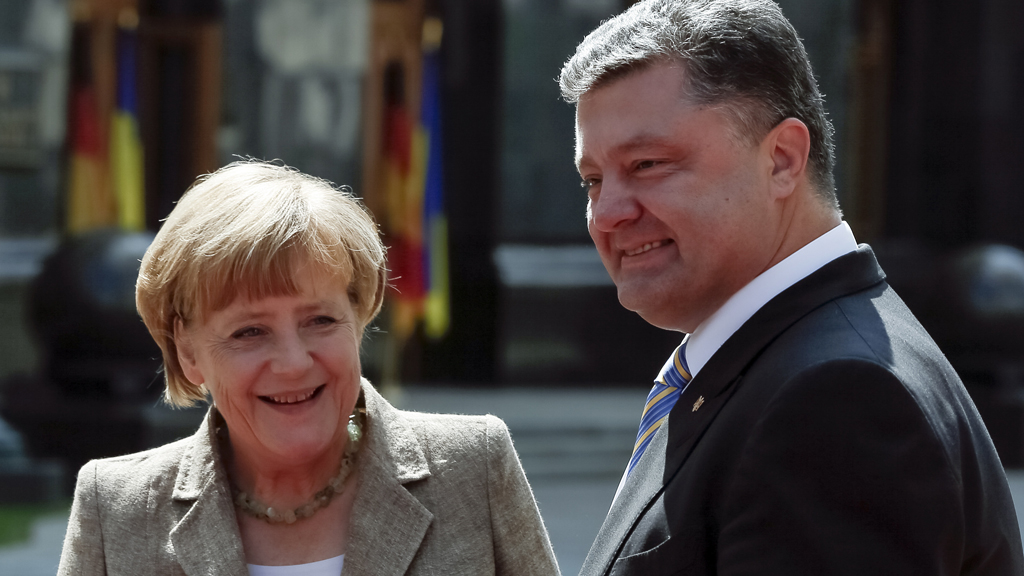Aid convoy trucks cross back from Ukraine into Russia
Some 100 trucks from a Russian aid convoy which crossed into Ukraine on Friday have crossed back into Russia. The incursion had been described as a “direct invasion” by Kiev.
The chief of Ukraine’s security service called the cross-border incursion a “direct invasion”. Western leaders joined Kiev in demanding the withdrawal of the convoy, which numbers around 220 vehicles, as soon as possible.
Germany’s Chancellor Angela Merkel (pictured below, with Ukraine’s President Petro Poroshenko) arrived in the Ukraine capital on Saturday for talks on how to end the crisis. Chancellor Merkel has already described the convoy as a “dangerous escalation”.
Peace talks between President Poroshenko and Vladimir Putin, his Russian counterpart, are due to take place in Minsk on Tuesday.
A Ukrainian military spokesman said on Saturday that the Russian trucks had been loading up production equipment from military plants in Ukraine. Andriy Lysenko told journalists the equipment was taken from the Topaz plant, which makes a type of radar system, and from a Luhansk factory producing firearms magazines.
Russian state TV has broadcast footage of some of the trucks being unloaded at a distribution depot in Luhansk, eastern Ukraine. The city is held by separatist rebels who are encircled by Ukrainian government forces, and has been cut off from power and water supplies for weeks.
Read more: Channel 4 News on the Ukraine/Russia crisis

Meanwhile, in the rebel stronghold of Donetsk there was unusually intense shelling on Saturday. Reuters reporters in the city say most of the shelling is taking place on the outskirts, but explosions have also been audible in the centre of the city.
The fighting may be part of a drive by Ukrainian forces to achieve a breakthrough ahead of Ukraine’s independence day on Sunday. Preparations are underway in Kiev and elsewhere for celebrations, 23 years after the collapse of the Soviet Union.
On Wednesday, protesters raised a Ukraine flag at the top of the 176-metre-high Kotelnicheskaya Embankment building in Moscow.
The Ukraine crisis started when protesters in Kiev ousted the pro-Russian president Viktor Yanukovych in February of this year. He was replaced by the pro-western President Poroshenko.
Nato says it has evidence Russian troops have been firing artillery at Kiev’s forces inside Ukraine, fuelling western allegations that the Kremlin is behind the conflict.
Russia denies giving material help to the rebellion in eastern Ukraine, and accuses Kiev, with the west’s backing, of waging a war against innocent civilians.